The presence of the high mountain ranges of Alborz and Zagros, preventing moist air masses from reaching the center of the country, has created a semi-arid and arid climate in these regions. The deserts of Iran cover about 86 million hectares of the country’s area, a significant size. Dasht-e Kavir and Lut Desert of Iran are two famous deserts in Iran, forming a large part of the country’s desert area. Join us for a closer look at this vast desert expanse.
Where is Dasht-e Kavir, Iran?
Dasht-e Kavir, also known as the Central Desert or the Great Salt Desert, is a vast desert located in the heart of the Iranian plateau, about 300 kilometers southeast of Tehran.
About Dasht-e Kavir, Iran
The two famous deserts of Iran, Dasht-e Kavir and Lut Desert, form the largest desert areas of the country. Known to world geologists as the “Great Kavir” and “Salt Kavir,” Dasht-e Kavir is the largest desert in Iran. Alphons Gabriel, a notable geologist, has introduced Dasht-e Kavir of Iran as the largest salt marsh in the world.
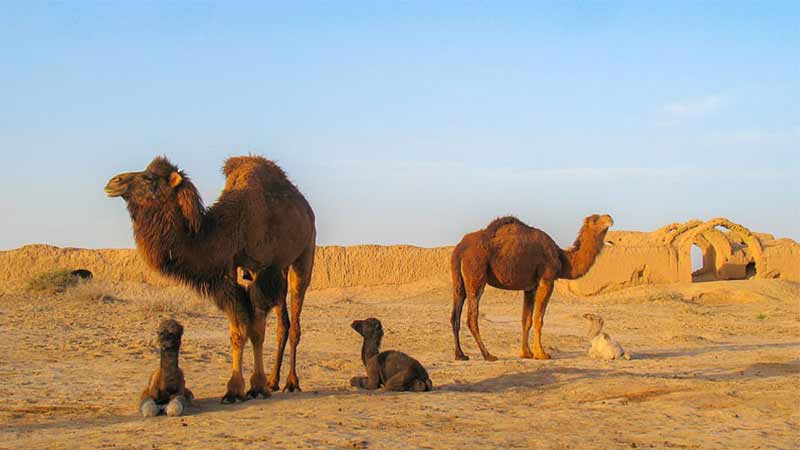
The Expanse of Dasht-e Kavir
Dasht-e Kavir in Iran is about 800 kilometers long and 320 kilometers wide. Mudflats and salt marshes cover much of the 77,600 square kilometers of this desert. Starting from the southern slopes of the Alborz mountains, it extends to the center of Iran. Dasht-e Kavir consists of two basins, east and west, each with its own unique characteristics.
Climate of Dasht-e Kavir
Contrary to popular belief, Dasht-e Kavir has a variety of climates. On hot summer days, temperatures in this region can exceed 50 degrees Celsius, while the temperature difference between day and night is about 70 degrees, expecting very cold nights in this vast salt plain. This extreme temperature variation makes the growth and life of plant and animal species almost impossible.
Currently, a large part of the central regions of Dasht-e Kavir in Iran is covered with marshlands. The eastern part is adorned with sand dunes, while the western part has a clayey cover. Although the salt layer of this desert seems hard, it is actually only a few centimeters thick. Under this salt layer is a kind of slippery, grease-like mud called “Cherbe.” This mud is very sticky, and if someone gets stuck in it, it will be extremely difficult to get out. Therefore, traveling in the untouched areas of Dasht-e Kavir is considered very dangerous.
The soil in the central areas of Dasht-e Kavir in Iran is completely barren, so it is not suitable for agriculture. The central desert environment is uninhabited, and only parts of it have been explored. Settlements around this desert are limited to a few scattered villages. Buildings in villages are constructed with an architectural style insulated against the harsh climatic conditions. Some inhabitants of Dasht-e Kavir have chosen to live in the hills and mountains surrounding the plain.
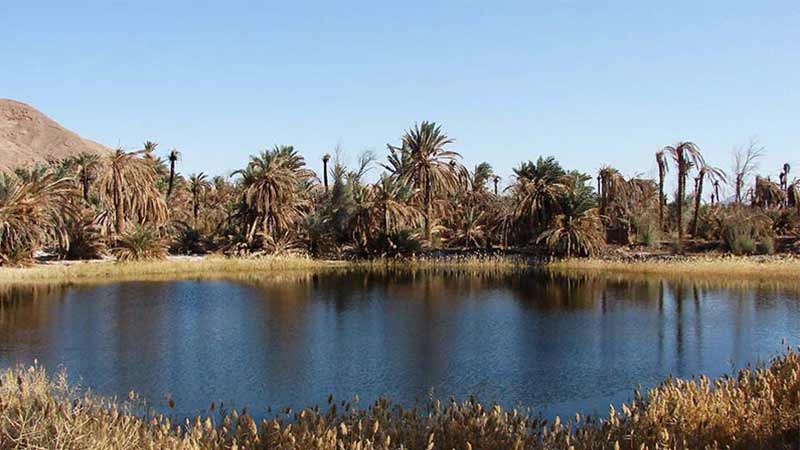
History of Dasht-e Kavir, Iran
Millions of years ago, the salty lake “Tethys” encompassed this desert. After the lake’s water dried up, a salt layer up to 6 to 7 kilometers thick formed in this area.
Over time, the salt layer that appeared on the lake’s bottom was buried under mudflats; however, since the density of salt is less than rock and mud, this element gradually pressured the upper layers and eventually, over millions of years, penetrated through the sediments and created interesting salt domes on the earth’s surface. The salt domes of Dasht-e Kavir are among the best examples of this geological phenomenon in the world.
Geologists have identified about 50 salt domes in this area, some of which have been eroded due to exposure to wind and rain.
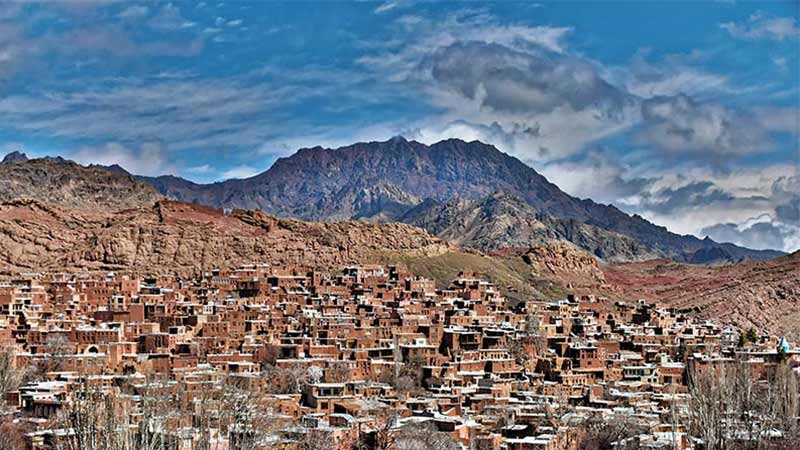
Tourist attractions of cities and villages around Dasht-e Kavir in Iran are as following:
Semnan
This city, as the capital of Semnan Province, is located south of the Alborz mountain range and north of Dasht-e Kavir in Iran.
Damghan
Located in Semnan Province, the southern part of this city is desert and sand dunes.
Kashan: Known as the “City of Flowers and Rose Water” and “Dar al-Mo’menin” in Isfahan Province. Desert areas are located in the northern and eastern parts of this city.
Garmsar
The city of Garmsar in Semnan Province is bordered to the south by Dasht-e Kavir in Iran.
Shahroud
Another city in Semnan Province, known as the “Cradle of Mysticism in Iran,” is connected to the Central Desert from its southern part.
Ravand
A city in the Kashan county, characterized by hot and dry weather due to its proximity to Dasht-e Kavir.
Aran and Bidgol: This county in Isfahan Province is located about 35 kilometers from the Salt Lake.
Garmeh
A famous village in the Khur and Biabanak county of Isfahan Province, located on the edge of Dasht-e Kavir.
Abuzeydabad
This city is the center of the Kavirat district in the Aran and Bidgol county of Isfahan Province.
Meshkat
Located in the Kashan county, it is the northernmost city in Isfahan Province and is situated on the edge of the Central Desert of Iran.
Badrud
Located in the Imamzadeh district of the Natanz county in Isfahan Province.
Ardistan
As the center of Ardistan county in Isfahan Province, it is located beside the Bandar Abbas-Tehran highway and is situated in the south of Dasht-e Kavir.
Mughar
Located in the Ardistan county of Isfahan Province, this city is a neighbor to Dasht-e Kavir.
Yekhab
A village in the Tabas county of South Khorasan Province.
Yazdalan
A village in the Kavir rural district, Kavirat district in the Aran and Bidgol county of Isfahan Province.
Kaghazi
A village in the Kavirat district in the Aran and Bidgol county of Isfahan Province.
Khorramdasht
A village in the central district of the Kashan county of Isfahan Province.
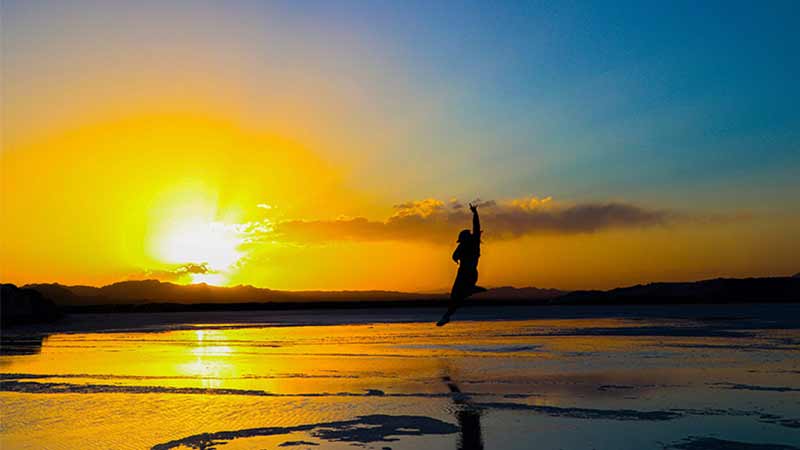
Rejin
Another village in the Kavir rural district, Kavirat district in the Aran and Bidgol county of Isfahan Province.
Mohammadabad
A city in the Jarghuyeh Olya district in Isfahan Province, also neighboring the Central Desert of Iran.
Fami
A village in the Natanz county of Isfahan Province.
Abshirin
This village is part of the Kashan county.
Nushabad
Located in the Aran and Bidgol county of Isfahan Province, it is connected to the north by the Central Desert of Iran.
Abyaneh
A beautiful village located on the slopes of Karkas mountain, 38 kilometers northwest of Natanz. This village is one of our country’s national monuments.
Anarak
Located in Isfahan Province, about 75 kilometers from the Nain county. This city is situated on the edge of Dasht-e Kavir.
Jandaq
Located in Isfahan Province on the southern edge of Dasht-e Kavir in Iran.
Chupanan
This village is part of the Nain county in Isfahan Province.
Chimeh
A beautiful village in the central district of the Natanz county. In 1398 Hijri Shamsi (Islamic calendar), a book titled “Chimeh Village: A Turquoise in the Heart of the Desert” was published about this village.
Soh
The village of Soh is part of the Shahin Shahr and Meymeh county in Isfahan Province. This village is located on the slopes of the Karkas mountain range.
Arousan
A village in the Khur and Biabanak county of Isfahan Province, located on the route of tourists visiting the Central Desert of Iran.
Ashin
“Ashin” or “Eshin” is a village in the west of Anarak in Isfahan Province. This village is on the desert tourism route and neighbors the Central Desert of Iran.
Moallemian
A village in Semnan Province located on the northern edge of the Central Desert of Iran.
Misr
A beautiful and touristy village in the Jandaq town and Khur and Biabanak county of Isfahan Province.
Mohammadabad Korehgaz
This village is part of the Khur and Biabanak county in Isfahan Province and is located on the southern edge of Dasht-e Kavir.
Mahabad (Ardistan)
The city of Mahabad in the Ardistan county of Isfahan Province. This city ultimately leads to Dasht-e Kavir.
Nain
Nain is the center of the Nain county in Isfahan Province. This city is located in the heart of Dasht-e Kavir.
Zavareh
Zavareh is located on the southern edge of Dasht-e Kavir, Iran’s central desert. This city is part of the Ardistan County in the Isfahan Province.
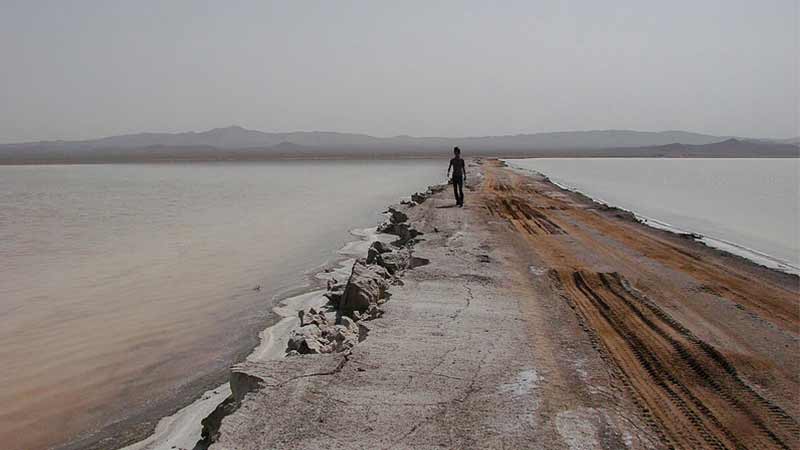
Deserts and Lakes
Bajestan Salt Desert
The Bajestan Salt Desert, also known as the Bardaskan Salt Pan and scientifically called “Playa,” covers about 7,888 hectares and is located in the south of Bardaskan County in the Razavi Khorasan Province.
Maranjab Desert
The Maranjab Desert is in the Aran and Bidgol County of Isfahan Province. It’s bordered by the Aran and Bidgol Salt Lake to the north, the Mesileh Desert and Howz-e Sultan Salt Lake to the west, the Band-e Rig Desert and Kavir National Park to the east, and the Aran and Bidgol County to the south.
Rig-e Jenn
Rig-e Jenn is a unique area in the central desert of Iran, known for its sand dunes and being unexplored and pristine. It’s located south of Semnan, east of the Salt Lake, north of Anarak, and west of Jandagh.
Salt Lake
The Salt Lake lies between the Isfahan, Qom, and Semnan provinces. It’s situated in the central desert of Iran and is the country’s second-largest saltwater lake.
Howz-e Sultan
Howz-e Sultan Salt Lake, approximately 240 square kilometers in size, is located northeast of the Qom County.
Siyazgah Desert
The Siyazgah Desert is in the Kavirat section of the Aran and Bidgol County in Isfahan Province. This desert hosts camel racing events.
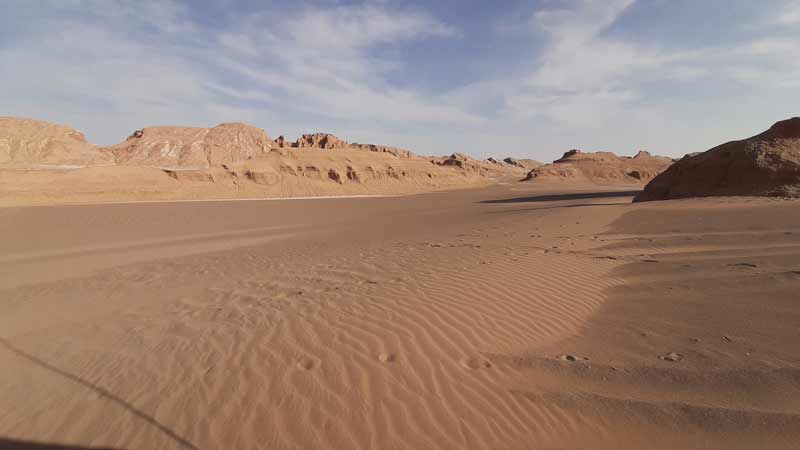
Abarkooh Desert
The Abarkooh Desert is located 20 kilometers east of the Abarkooh County in the Yazd Province.
Chah-e Ghieb Desert
Chah-e Ghieb, also known as Hamun Chah-e Ghieb, is one of the southeastern deserts of Iran in the central desert region. It’s situated 50 kilometers from the Khash County in the Sistan and Baluchestan Province.
Haj Ali Gholi Desert
This desert and salt flat is located in the southeast of Damghan, covering about 2,391 square kilometers.
Saghnd Desert
Saghnd, one of the central deserts of Iran in the Yazd Province, spans about 22,625 hectares.
Siah Kooh Desert (Ardakan)
The Siah Kooh Desert is 40 kilometers north of the city of Ardakan and 20 kilometers south of Anarak.
Daq-e Sorkh Desert
The Daq-e Sorkh Desert is located in the Ardistan County of Isfahan Province.
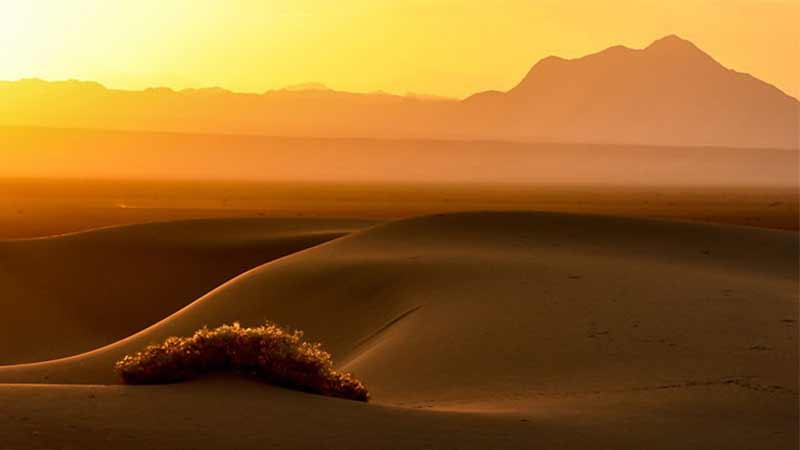
Vegetation and Wildlife of Dasht-e Kavir, Iran
The extreme temperature difference between day and night in Dasht-e Kavir, Iran, makes life challenging. Animals like hedgehogs, camels, desert foxes, eagles, falcons, native sheep and goats, desert snakes, spiders, and other reptiles can survive here. In the surrounding mountainous areas, several species of wild animals such as the Persian leopard and mountain goat live.
The high salt content of Dasht-e Kavir, Iran, combined with aridity, prevents plant growth. Only a few salt-tolerant plant species are visible in this vast plain.
Staying in Dasht-e Kavir, Iran
In the past, one challenge for tourists taking a desert tour in Iran, especially to Dasht-e Kavir, was finding a place to stay overnight. This was only possible by traveling long distances to the nearest hotel or guesthouse. However, now there are many traditional guest houses in the villages and cities around the desert. Additionally, in recent years, desert camps have been established in Dasht-e Kavir, Iran, offering visitors the opportunity to stay in the heart of this vast area.



